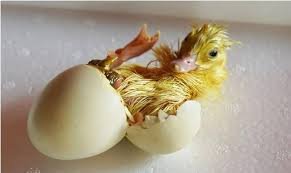
fertilized duck egg
What Are Fertilized Duck Eggs?
A fertilized duck egg is an egg laid by a female duck that has been successfully mated with a male duck, meaning the egg contains a developing embryo. These eggs differ from standard unfertilized eggs in that they can, under the right conditions, grow into ducklings. Fertilized duck eggs are consumed in various cultures around the world, both in early stages of development and in partially developed forms. The most well-known example is balut, a popular street food in Southeast Asia.
Fertilized duck eggs can be incubated for hatching or processed for culinary or nutritional purposes. This article explores the biology, development, health benefits, cultural uses, and ethical considerations of fertilized duck eggs.
How Are Duck Eggs Fertilized?
Fertilization in ducks occurs internally. When a male duck, known as a drake, mates with a female, sperm is transferred and can remain viable in the female’s reproductive tract for up to two weeks. During this period, each egg released from the ovary may be fertilized as it passes through the oviduct.
A fertilized duck egg has the following characteristics:
- A blastodisc turns into a blastoderm, which is the early stage of the embryo.
- The embryo begins developing once the egg is kept at a warm temperature (~99.5°F or 37.5°C).
- In natural conditions, the mother duck incubates the egg for 28 days until hatching.
Learn more about avian reproduction from The Poultry Site.
How to Tell If a Duck Egg Is Fertilized
To determine whether a duck egg is fertilized, candling is the most reliable method. This involves holding the egg in front of a bright light source in a dark room.
Signs of fertilization during candling:
- Day 1–3: A faint dark spot with visible blood vessels may appear.
- Day 4–7: A developing embryo begins to move inside the shell.
- Day 10+: Clear outlines of the duckling’s head, wings, or feet may be visible.
If the egg remains clear with only a bright yolk inside, it is likely unfertilized.
Candling images and tutorials are available at Backyard Chickens.
Development Stages Inside a Fertilized Duck Egg
A fertilized duck egg goes through several stages of development:
- Days 1–7: Heartbeat begins, limbs start to form, and major organs develop.
- Days 8–14: Feathers appear; embryo becomes visibly active.
- Days 15–21: Bill and eyes are clearly formed; embryo fills most of the egg.
- Days 22–28: Final growth; duckling prepares to hatch by absorbing yolk sac.
Proper humidity, temperature, and egg turning are essential for healthy embryo development. Most incubators maintain 50–65% humidity and automatic turning to prevent deformities.
Nutritional Value of Fertilized Duck Eggs
Fertilized duck eggs—especially those not fully developed—are rich in protein, vitamins, and minerals. They contain slightly more nutrients than unfertilized eggs due to embryonic tissue formation.
Nutritional components include:
- High-quality protein (6–9 grams per egg)
- Healthy fats including omega-3 and omega-6 fatty acids
- Vitamins A, D, B12, and folate
- Iron, phosphorus, selenium, and zinc
- Choline, important for brain development
If the embryo has developed, the yolk is partially absorbed into the body of the duckling, creating a soft, chewy texture that many find appealing.
Learn more about egg nutrition from the USDA FoodData Central.
Fertilized Duck Eggs in Global Cuisines
Fertilized duck eggs are considered a delicacy in several cultures. The most iconic preparation is balut, a fertilized egg incubated for 14–21 days before being boiled and eaten from the shell.
Popular cultural uses include:
- Philippines: Balut is sold on the street, often with vinegar or salt.
- Vietnam: Known as hột vịt lộn, it’s usually served with herbs and ginger.
- Cambodia and Laos: Fertilized duck eggs are common street snacks.
- China: Sometimes incorporated into soups and stews, though less commonly than chicken eggs.
Balut is often seen as a source of vitality, fertility, and masculine strength in traditional medicine. Despite being controversial in Western countries, it holds strong cultural significance across Asia.
More on balut can be found at National Geographic.
Ethical and Cultural Controversies
Fertilized duck eggs, particularly when consumed mid-development, raise ethical concerns in some communities. While many cultures celebrate them as nutritious and culturally meaningful, others see the practice as cruel or unsanitary.
Common controversies include:
- Animal welfare: Some argue that eating a semi-developed embryo is unethical.
- Hygiene concerns: If not properly stored or cooked, these eggs can harbor bacteria like Salmonella.
- Cultural misunderstanding: Western aversion to balut often stems from unfamiliarity rather than food safety issues.
Despite controversy, fertilized eggs remain culturally protected foods in many countries, supported by generations of traditional knowledge.
Hatching Fertilized Duck Eggs at Home
Many people use fertilized duck eggs for homesteading, school projects, or conservation efforts. Incubating duck eggs requires basic equipment and close monitoring.
Steps to hatch fertilized duck eggs:
- Set up an incubator with a stable temperature of 99.5°F (37.5°C).
- Maintain humidity around 55% for the first 25 days.
- Turn eggs 3–5 times a day until day 25.
- On day 26–28, stop turning and increase humidity to 65–70% for hatching.
Ducklings typically hatch by pipping the shell and slowly breaking out over 12–48 hours.
Guides and hatching charts are available at Metzer Farms.
Differences Between Fertilized and Unfertilized Eggs
| Feature | Fertilized Egg | Unfertilized Egg |
|---|---|---|
| Embryo | Yes | No |
| Can Hatch | Yes, if incubated | No |
| Taste | Slightly richer | Neutral |
| Nutritional value | Slightly higher | Standard |
| Use in cooking | Same for early-stage eggs | Same |
When collected early (1–3 days after being laid), fertilized eggs look and taste like regular eggs. They are perfectly safe to eat and are sold in many Asian markets.
Storage and Safety Tips
To safely store fertilized duck eggs for eating:
- Keep refrigerated if not incubating (below 45°F / 7°C)
- Consume within 1–2 weeks
- Cook thoroughly: Always boil or steam to kill harmful bacteria
- Do not wash fertilized eggs before storage, as this removes the protective bloom
If incubating, store eggs at room temperature no longer than 7 days before setting them in the incubator.
Conclusion
Fertilized duck eggs represent an extraordinary example of how biology, nutrition, and culture intersect. From their complex development inside the shell to their role as a culinary delicacy and source of life, these eggs have fascinated people across time and geography. Whether you’re interested in hatching ducklings, trying balut for the first time, or simply learning more about animal reproduction, fertilized duck eggs offer a unique window into nature’s process.
Understanding the science and tradition behind fertilized duck eggs can help break down cultural barriers and promote respect for global food practices—while also highlighting the beauty and fragility of life itself.






